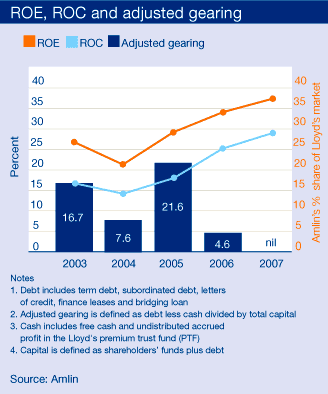Review
Financial Management – balancing financial risk and return
Returning excess equity capital to shareholders
Finally, in order to enhance our return on equity, as actual levels of capital in the business exceed our capital requirements, we look to return surplus capital to shareholders. The amount of capital returned will depend on maintaining levels of capital that support regulatory capital requirements, that are commensurate with financial strength ratings assigned by rating agencies, that provide clients with necessary assurance as to our ongoing financial strength, and that supports medium and long term growth ambitions.
Our commitment to return of capital has been clearly demonstrated. In May 2007 Amlin paid a special dividend of £42.7 million (equating to 8.0p per share). More recently, in December shareholders approved the Board’s proposal to return a further £120.4 million to shareholders (equating to 22.4p per share) through the issue of B shares.
The B share mechanism, combined with a consolidation of Amlin’s existing ordinary shares, was used to ensure that the capital return was executed with certainty and equity.
The share consolidation was designed to leave the net tangible asset per share after the distribution at approximately the level that it was before the distribution. This was an important feature because most analysts’ valuations of insurance companies are based upon a multiple of net tangible assets.
The enhancement of return on equity achieved by active capital management in recent years is shown in the graph below.

